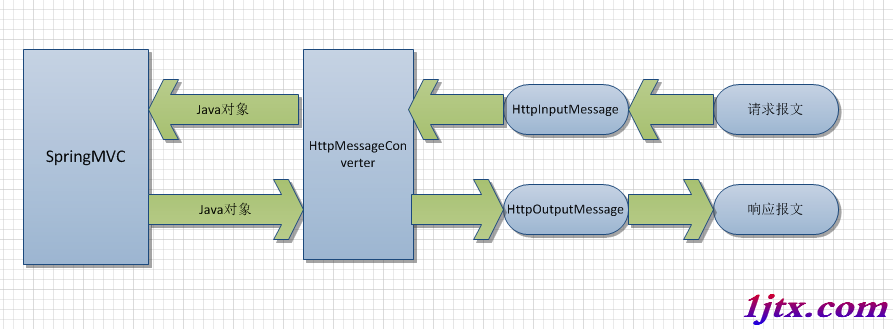簡介
springmvc對json的前後台傳輸做了很好封裝,避免了重復編碼的過程,下面來看看常用的@ResponseBody和@RequestBody注解
添加依賴
springmvc對json的處理依賴jackson
<dependency> <groupId>org.codehaus.jackson</groupId> <artifactId>jackson-core-asl</artifactId> <version>1.9.11</version> </dependency> <dependency> <groupId>org.codehaus.jackson</groupId> <artifactId>jackson-mapper-asl</artifactId> <version>1.9.11</version> </dependency>
xml配置
<mvc:annotation-driven />//不要忘了命名空間配置
@ResponseBody
如果傳輸的是單層json對象,我們後台可以直接用 @RequestParam接收
$.ajax({
type : "post",
dataType : "json",
url : "/testRequestBody",
data:{
name:"韋德",
age:35
},
success : function(result) {
}
});
@RequestMapping("/testRequestBody")
public String testRequestBody(@RequestParam Map<String, Object> map) {
System.out.println(map);// {name=韋德, age=35}
return "index";
}
如果傳輸的是多層嵌套json對象,這個時候會就會出現數據丟失問題
@ResponseBody很好的解決了這個問題,它會把前台傳輸過來的json轉化為後台對應的對象
$.ajax({
type : "post",
dataType : "json",
url : "/testRequestBody",
contentType:"application/json",
data:JSON.stringify({
name:"韋德",
win:[2006,2012,2013],
age:35
}),
success : function(result) {
}
});
@RequestMapping("/testRequestBody")
public String testRequestBody(@RequestBody Map<String, Object> map) {
System.out.println(map);//{name=韋德, win=[2006, 2012, 2013], age=35}
return "index";
}
需要注意的是前台需要指定contentType為"application/json"
同時要把json對象轉化為String,否則後台不能識別
@ResponseBody
ajax請求返回json格式,往常我們可以這樣做
private void writeJson(HttpServletResponse response, Object object) {
String json = JSON.toJSONString(object);
response.setCharacterEncoding("UTF-8");
response.setContentType("application/json; charset=utf-8");
PrintWriter out = null;
try {
out = response.getWriter();
out.write(json);
} catch (IOException e) {
e.printStackTrace();
} finally {
if (out != null) {
out.close();
}
}
}
這個時候 @ResponseBody就派上用場了,只需要一個注解,全部搞定
$.ajax({
type : "post",
dataType : "json",
url : "/testResponseBody",
success : function(result) {
console.info(result);
}
});
@RequestMapping("/testResponseBody")
@ResponseBody
public Map<String, Object> testRequestBody() {
Map<String, Object> result = new HashMap<String, Object>();
result.put("name", "韋德");
result.put("age", 35);
return result;
}
前台console輸出
{
"age": 35,
"name": "韋德"
}
總結
在網上看到很不錯的流程圖,作為總結吧

以上就是本文的全部內容,希望對大家的學習有所幫助,也希望大家多多支持。